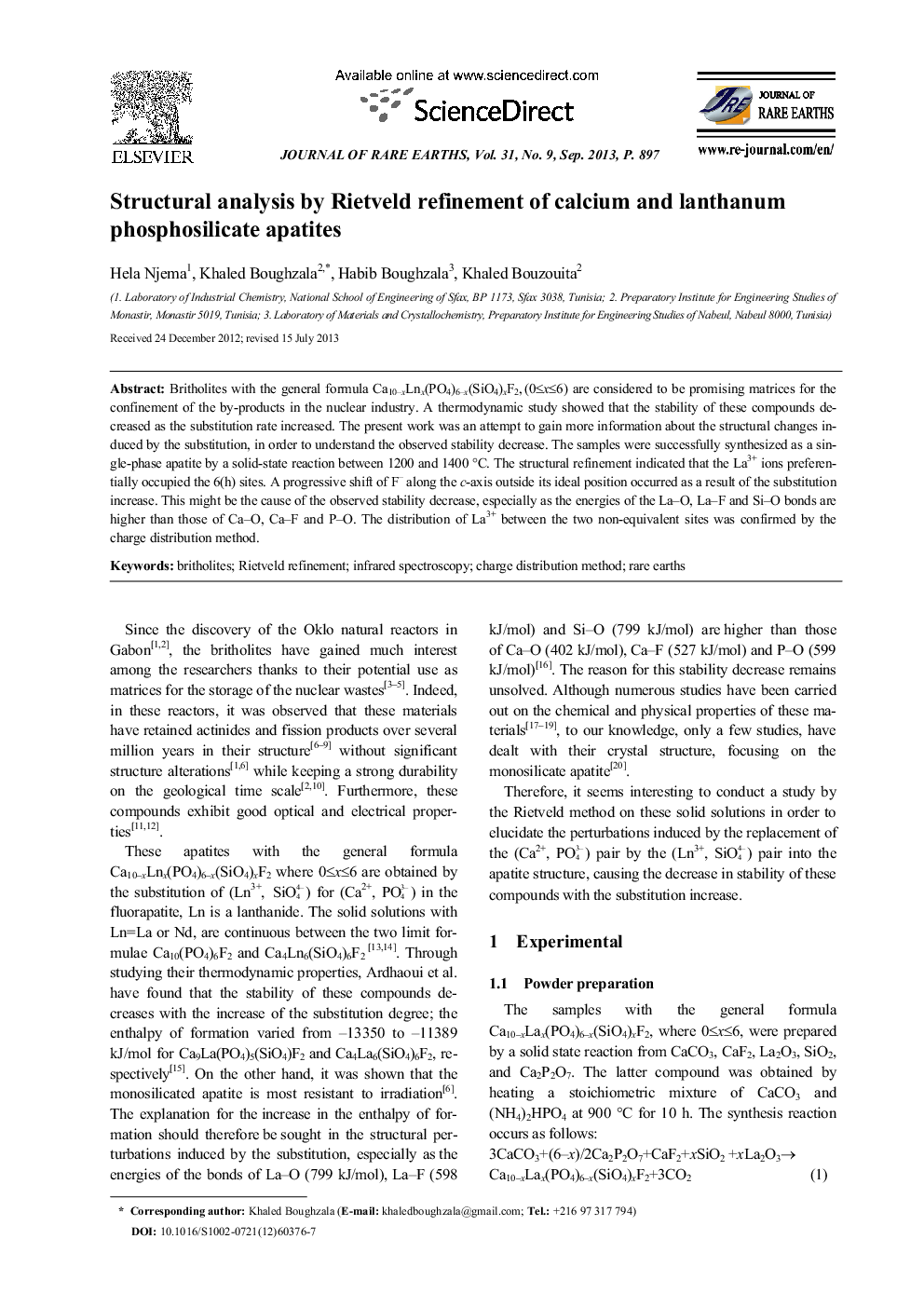| Article ID | Journal | Published Year | Pages | File Type |
|---|---|---|---|---|
| 1259698 | Journal of Rare Earths | 2013 | 8 Pages |
Britholites with the general formula Ca10–xLnx(PO4)6–x(SiO4)xF2, (0≤x≤6) are considered to be promising matrices for the confinement of the by-products in the nuclear industry. A thermodynamic study showed that the stability of these compounds decreased as the substitution rate increased. The present work was an attempt to gain more information about the structural changes induced by the substitution, in order to understand the observed stability decrease. The samples were successfully synthesized as a single-phase apatite by a solid-state reaction between 1200 and 1400 °C. The structural refinement indicated that the La3+ ions preferentially occupied the 6(h) sites. A progressive shift of F− along the c-axis outside its ideal position occurred as a result of the substitution increase. This might be the cause of the observed stability decrease, especially as the energies of the La–O, La–F and Si–O bonds are higher than those of Ca–O, Ca–F and P–O. The distribution of La3+ between the two non-equivalent sites was confirmed by the charge distribution method.
Following of the substitution of the Ca2+ and PO43−by the La3+ and SiO44−, respectively, the F− ions shift outside their ideal positions, contributing to the destabilization of the apatite structureFigure optionsDownload full-size imageDownload as PowerPoint slide
